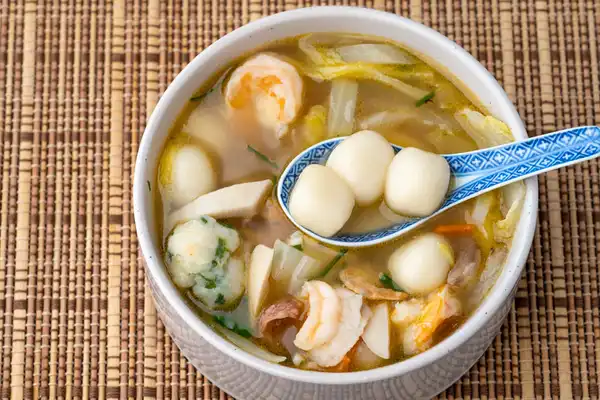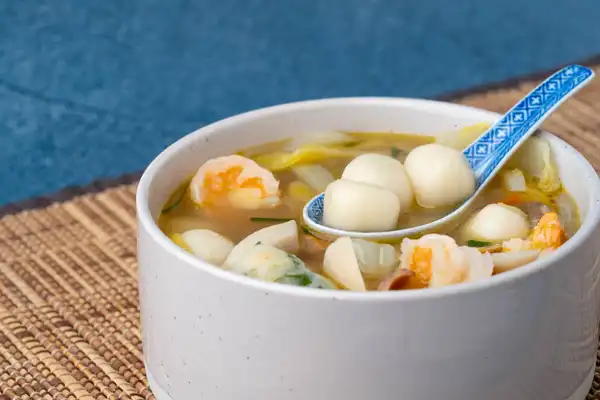The ultimate bowl of soup
Tong Jyun (also spelled Tangyuan) is my favorite dish of all time! Also known as sticky rice ball soup, Tong Jyun comes in both savory and sweet varieties, and sometimes the rice balls are filled with goodies like red bean paste.
What I grew up eating is the classic savory Toisanese version, where the rice balls feel like warm hugs in your mouth and the soup is packed with flavor and textures.
Tong Jyun is traditionally eaten during the Winter Solstice or Dongzhi in Cantonese, which is one of the most important events in the Chinese calendar. In astronomy, the Winter Solstice marks the day of the year where the sun travels the shortest path through the sky, resulting in the least sunlight and the longest night of the year.
Like in many cultures throughout history, Dongzhi brings families together in a celebration of longer days, the symbolic death and rebirth of the sun, and for light triumphing over darkness.
A bowl of love
Tong Jyun is really important to me and my Chinese identity because it'll always represent the love and care I felt from my parents growing up. Because of our language barrier, I wasn't always able to communicate on a deeper level with my parents, but tangyuan was always a reminder that I am loved.
Tong Jyun was actually one of the dishes that made me want to start Made With Lau because I always wanted to make sure that I preserved my dad's recipe to pass down through the generations.
It's fitting that tangyuan is purposely shaped like a ball to symbolize the perfect, united, familial bond in Chinese culture. As our son and our future kids get older, I look forward to continuing the tradition with my family and passing it down through the generations.
Check out a quick story summary of our recipe!



